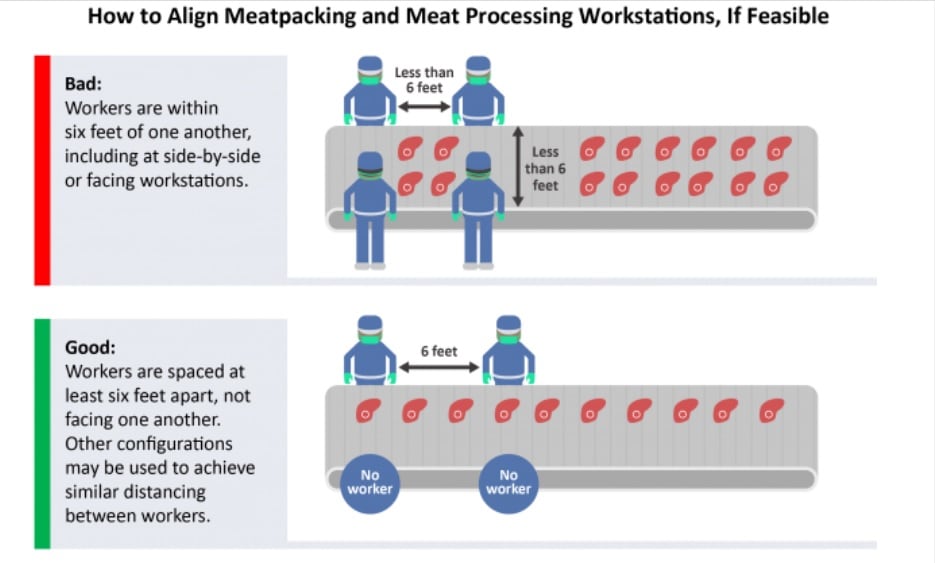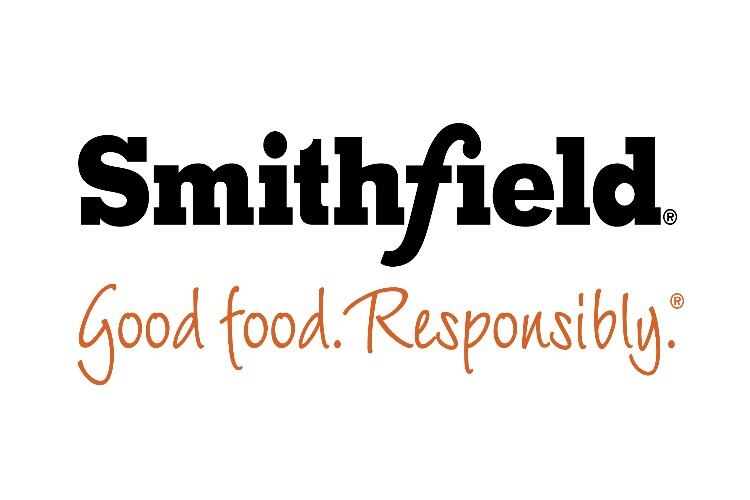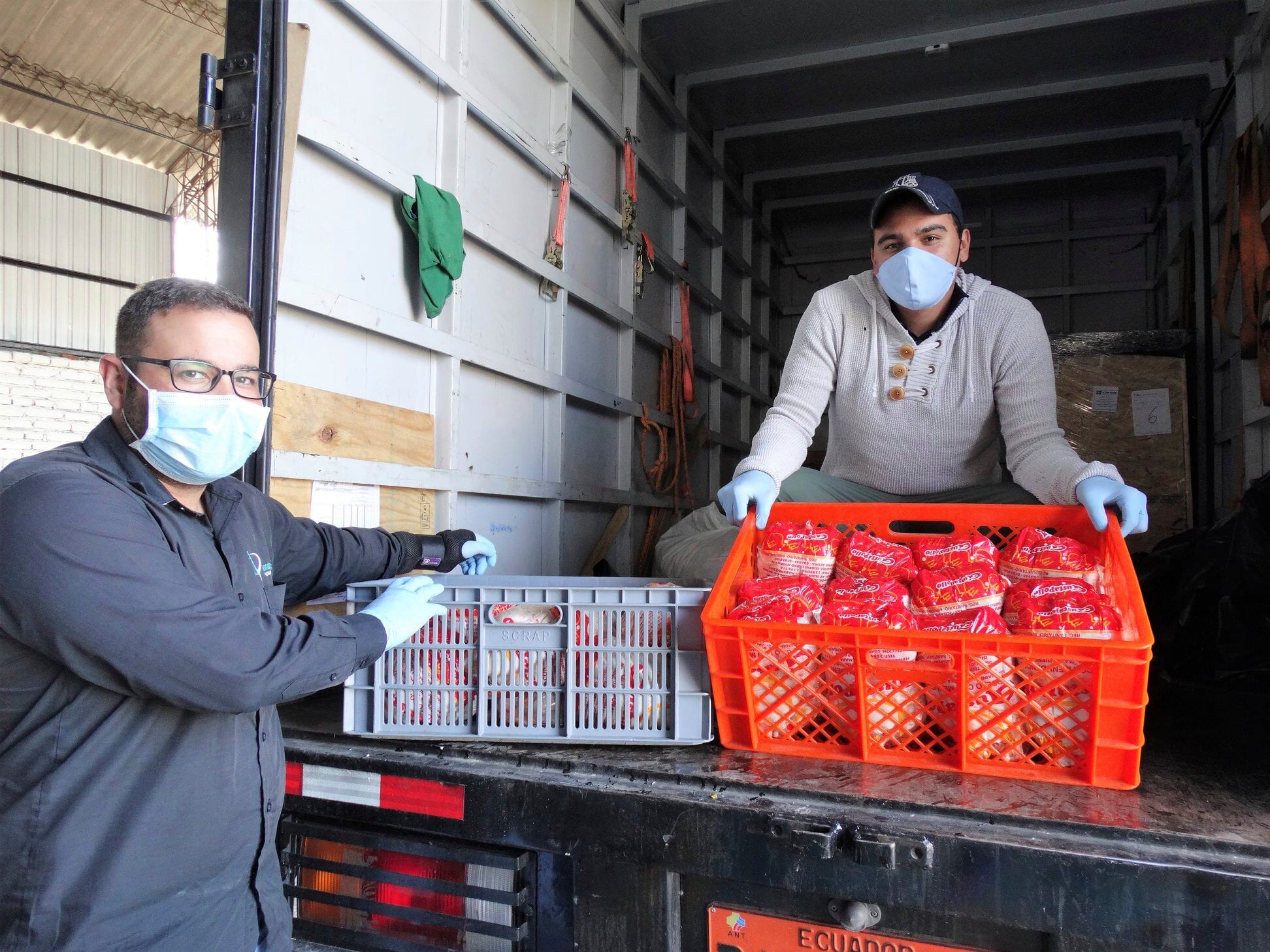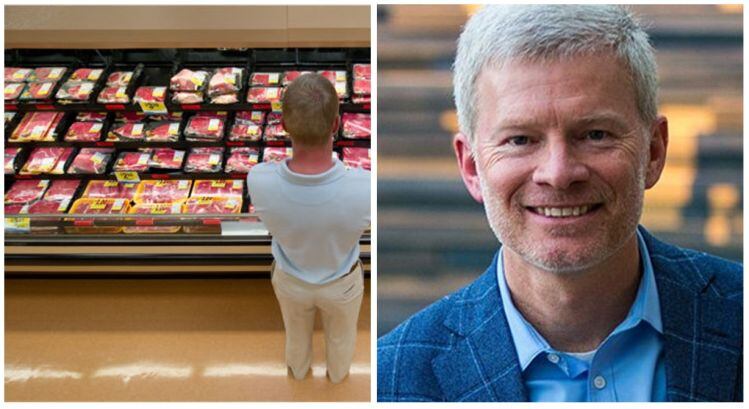The defensive ad and detailed safety guidance published April 26 come after at least 3,300 meatpackers at more than 30 plants run by various businesses, including Tyson Foods, JBS USA and Smithfield Foods, have contracted COVID-19. They also come amid allegations, including in a federal lawsuit, that the facilities directed employees to continue working while sick in crowded conditions.
The outbreaks prompted the companies to close at least 15 plants temporarily for sanitization and to re-think how the facilities could continue to operate safely during the ongoing pandemic.
‘The food supply chain is breaking’
While the closures may help to slow the spread of the novel coronavirus, Tyson argues in the full-page ads that ran in The Washington Post, New York Times and Arkansas Democrat-Gazette on April 26 that they also strain the food supply chain.
“The food supply chain is breaking,” warned Tyson Chairman of the Board John Tyson in the ad.
He explained, “As pork, beef and chicken plants are being forced to close, even for short periods of time, millions of pounds of meat will disappear from the supply chain. As a result, there will be limited supply of our products available in grocery stores until we are able to reopen our facilities that are currently closed.”
He added this could trigger price increases and create a “serious food waste issue.”
He said that while the facilities are closed “farmers across the nation simply will not have anywhere to sell their livestock to be processed, when they could have fed the nation. Millions of animals – chickens, pigs and cattle – will not depopulated because of the closure of our processing facilities.”
To minimize these risks and fulfill its “responsibility to feed our country,” which is “as essential as healthcare,” Tyson called on the government to “unite in a comprehensive, thoughtful and productive way to allow our team members to work in safety without fear, panic or worry.”
He added that the private and public sectors also must do their parts to “show the world what we can do when working together.”
CDC details best practices
As if on cue, on the same day the ads ran, the CDC and the Occupational Safety and Health Administration issued updated guidance for the meat and poultry packing industry to reduce the spread of COVID-19 while continuing to operate.
Recognizing that meatpacking employees are at heightened risk of contracting coronavirus not because it is transmitted through the food they are preparing, but because of tight working conditions, long shifts and “a common practice at some workplaces of sharing transportation,” the CDC and OSHA outline best practices to mitigate risk and exposure.
For example, it outlines how facilities can reconfigure meat processing workstations and adjust ventilation to minimize exposure, increase sanitization stations, ease congestion points such as stations for clocking in and out, and further encourage social distancing inside and outside of work.
The guidance also urges companies to review leave and incentivize policies, provide personal protective equipment and cloth face coverings, establish cleaning and disinfection processes for the facility, screen and monitor workers’ health, better manage sick workers and provide guidance for returning to work after sick leave.
Many of these practices already were on CDC’s website, but not collected in one place.
“A delicate balance”
Tyson argues in the newspaper ads that the company has instituted many of these safety measures, some even before CDC recommended them.
For example, Tyson said it created a coronavirus task for in January and since then has “put in place numerous measures to protect our team members,” including installing infrared walkthrough temperature scanners at its facilities, implementing social distancing measures, adding daily deep cleaning, relaxing its attendance policy to encourage sick workers to stay home and making it easier for employees to access healthcare and short-term disability for COVID-19 related conditions.
These measures help create “a delicate balance” between the company’ obligation to remain operational, and “team member safety as our top priority,” according to Tyson.




